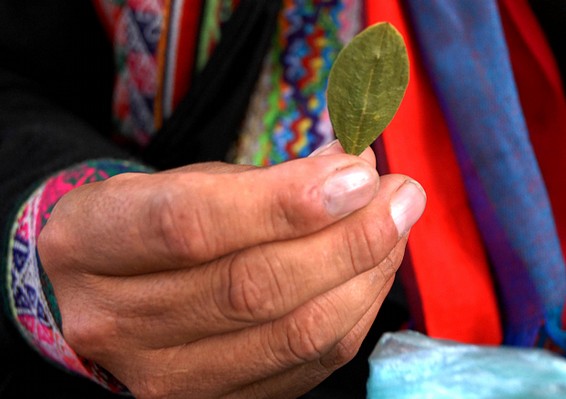 Outside of Latin America, coca leaf is most often associated with cocaine. However, there are many other uses for the plant.
Outside of Latin America, coca leaf is most often associated with cocaine. However, there are many other uses for the plant.
Indigenous people began using coca thousands of years ago. The first instance can be traced back 5,000 years ago to coastal Ecuador. In pre-Columbian times, coca was so valuable that the Incans restricted its use to the noble classes. Since then, coca usage has broadened to include all levels of society. Today, using coca leaf is an ordinary part of daily life for many Andean people in countries like Peru, Bolivia, and Venezuela.
Scientific evidence dates coca usage back to Nazca, Moche, Chiribaya and Inca cultures. Archaeologists have found evidence of the use of coca from deposits of alkali on human teeth and images of in Peru’s Ayacucho valley caves. This took place between 5250-2800 BC. Recovered ancient ceramic pots also showed that coca was in use in coastal Ecuador around 3000 BC.
For the ancient Andeans, coca was an important part of daily life. It was used for celebration and also had medicinal properties. It helps treat fatigue, dental issues, headaches, asthma, impotence and much more. Coca tea, called Mate de coca, was a common drink throughout Andean populations and is still available. In fact, it is frequently served in tourist establishments to treat nausea and dizziness caused by altitude sickness.
Coca was also part of the religion of the Andean people who lived in Peru, Boliva, Ecuador, Colombia and parts of Northern Chile and Argentina. While these beliefs began in pre-Incan times, they continue on today. Coca leaves are read like tea leaves for divination and used in shamanic rituals. People in some parts of South America even chewed the leaves before meditation.
Even in recent times, coca remains important to the people of some South American countries and some usages are completely legal. For example, the governments of Peru, Bolivia and Venezuela have recommended the use of it in common products including tea,